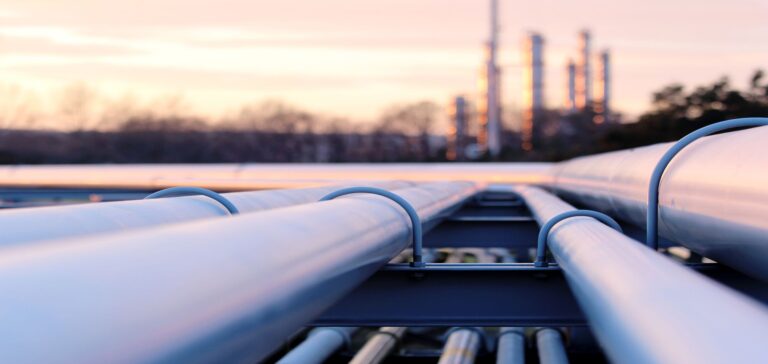The ambitious “green” hydrogen pipeline project between Barcelona and Marseille H2Med, officially launched Friday in Alicante, Spain, will be operational in 2030 and cost about 2.5 billion euros, French and Spanish leaders announced. This project should be “completed by 2030,” said French President Emmanuel Macron after a meeting with the heads of government of Spain and Portugal, Pedro Sanchez and Antonio Costa.
For his part, Mr. Sanchez said that the cost of construction of H2Med should “approach 2.5 billion euros. This pipe will transport by 2030 some two million tons of hydrogen per year, he also said.
This project will be submitted by December 15 to the European Commission in order to benefit from the status of “project of common interest” and therefore European funding, added Macron. Present at the meeting between the Spanish, French and Portuguese leaders, the President of the European Commission, Ursula von der Leyen, “warmly welcomed” this agreement between the three countries, which “goes in the right direction”.
This undersea pipeline is designed to transport so-called “green” hydrogen, produced from renewable electricity, from the Iberian Peninsula, which aims to become a champion of this energy of the future, to France and the north of the EU.
This project replaces the “MidCat”, launched in 2003 to link the French and Spanish gas networks via the Pyrenees, but finally abandoned due to its lack of economic interest, the opposition of environmentalists and that of Paris.
Schedule, cost, route… Here is what we know at this stage about this initiative launched jointly by Madrid, Lisbon and Paris. What does this project consist of? Called “H2Med” or “BarMar” (a contraction of Barcelona-Marseille), this undersea pipeline is intended to transport gas and then so-called “green” hydrogen – because it is made from renewable electricity – from Spain to France and the north of the EU.
This project, announced on October 20 at a European summit, replaces the “MidCat”, launched in 2003 to link the French and Spanish gas networks via the Pyrenees, but finally abandoned because of its lack of economic interest, the opposition of environmentalists and that of Paris.
What are the objectives of the “Corridor”?
The H2Med aims first of all to reduce Europe’s dependence on Russian gas by improving gas interconnections between the Iberian Peninsula and its neighbors. Spain and Portugal have 40% of the EU’s regasification capacity, but are poorly connected to the rest of the EU member states.
Above all, this pipeline will ultimately accelerate the decarbonization of European industry by giving it access to clean energy produced on a large scale, as Spain and Portugal prepare to become world leaders in green hydrogen, thanks to their numerous wind and photovoltaic farms.
Why Marseille and Barcelona?
According to the promoters of the project, this connection is “the most direct and efficient option to connect the Iberian Peninsula to Central Europe”. In fact, Barcelona hosts “one of the largest LNG terminals” in the EU and occupies “a place of choice in the Spanish gas network”, said to AFP José Ignacio Linares, professor at the Pontificia Comillas University in Madrid. Marseille is well connected to the French network. It is also an interesting gateway to serve the Rhone Valley, Germany and even northern Italy, industrial regions that will become major consumers of green hydrogen.
Which route?
The exact route of the pipeline has not yet been communicated, but “the most logical” would be that it “follows the coast”, in order to avoid underwater areas that are too deep, according to Linares.
In this case, the H2Med would make about 450 kilometers. But a slightly different route is not excluded, the persons in charge of the project having to find “the most stable grounds possible”, even if it means to move away a little from the coast, specifies the researcher.
What obstacles?
H2Med faces several technical difficulties, partly related to its novelty. “A submarine hydrocarbon pipeline at this depth, at this distance, has never been done”, underlines Gonzalo Escribano, expert of the Spanish study center “Real Instituto Elcano”.
For José Ignacio Linares, one of the main problems is the nature of hydrogen, a gas made up of small molecules that can escape through the joints of the pipeline and are also extremely aggressive, which can lead to corrosion problems. But these problems “are not insurmountable”, underlines this engineer of formation. “All you have to do is install a membrane inside the pipe, some kind of plastic, to prevent the hydrogen from escaping or attacking” the metal, he adds.
What future?
The real risk, for the experts, is the economic viability of the project. Since the technology is still in its infancy, “we don’t know when the green hydrogen market will take off, when we will be able to produce enough to export it,” says Escribano.
This will turn the construction of the H2Med into an industrial bet. “The problem is that the construction time for a pipeline is so long that we can’t afford to wait. Otherwise, we’ll end up with a lot of hydrogen production that we won’t be able to export,” says Linares. Linares.






















